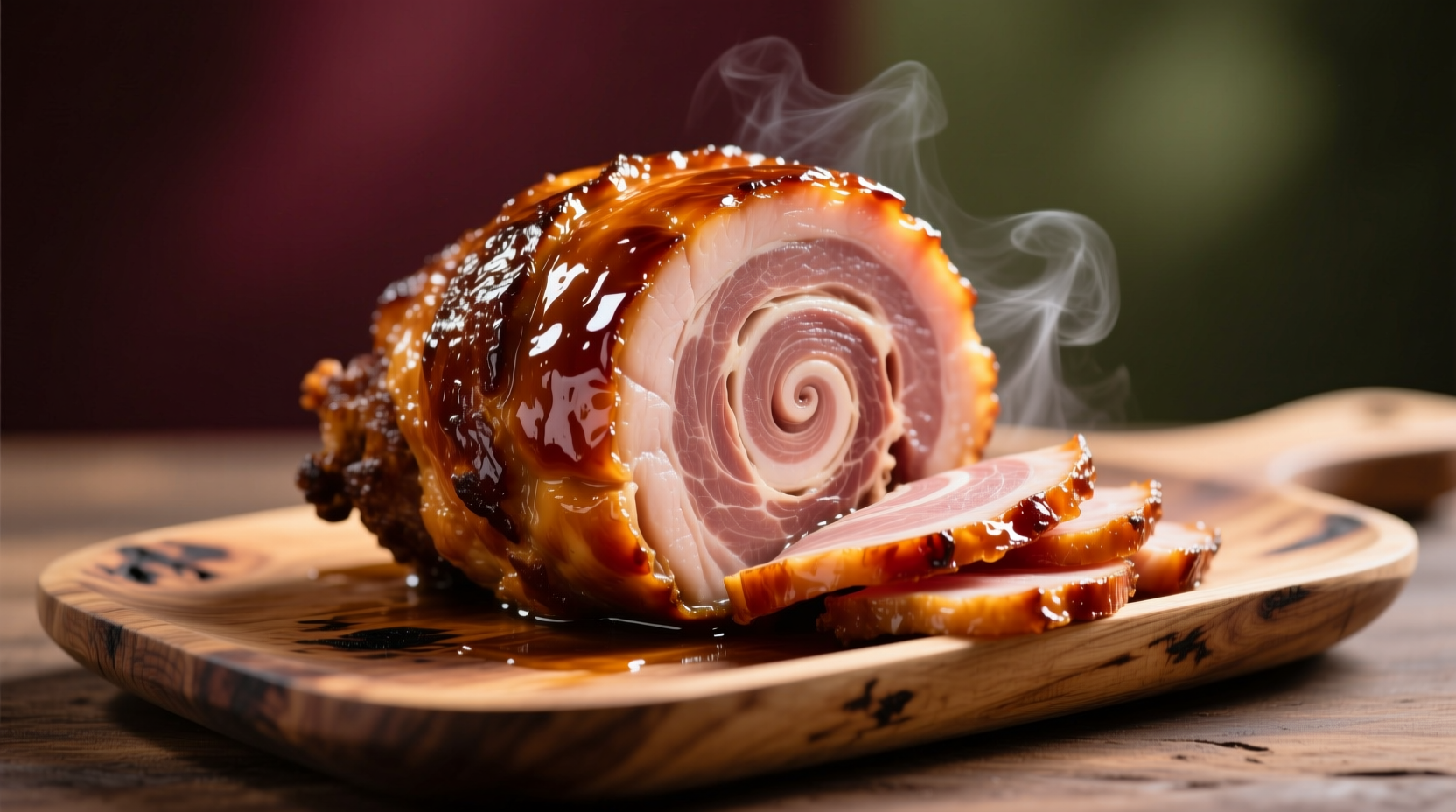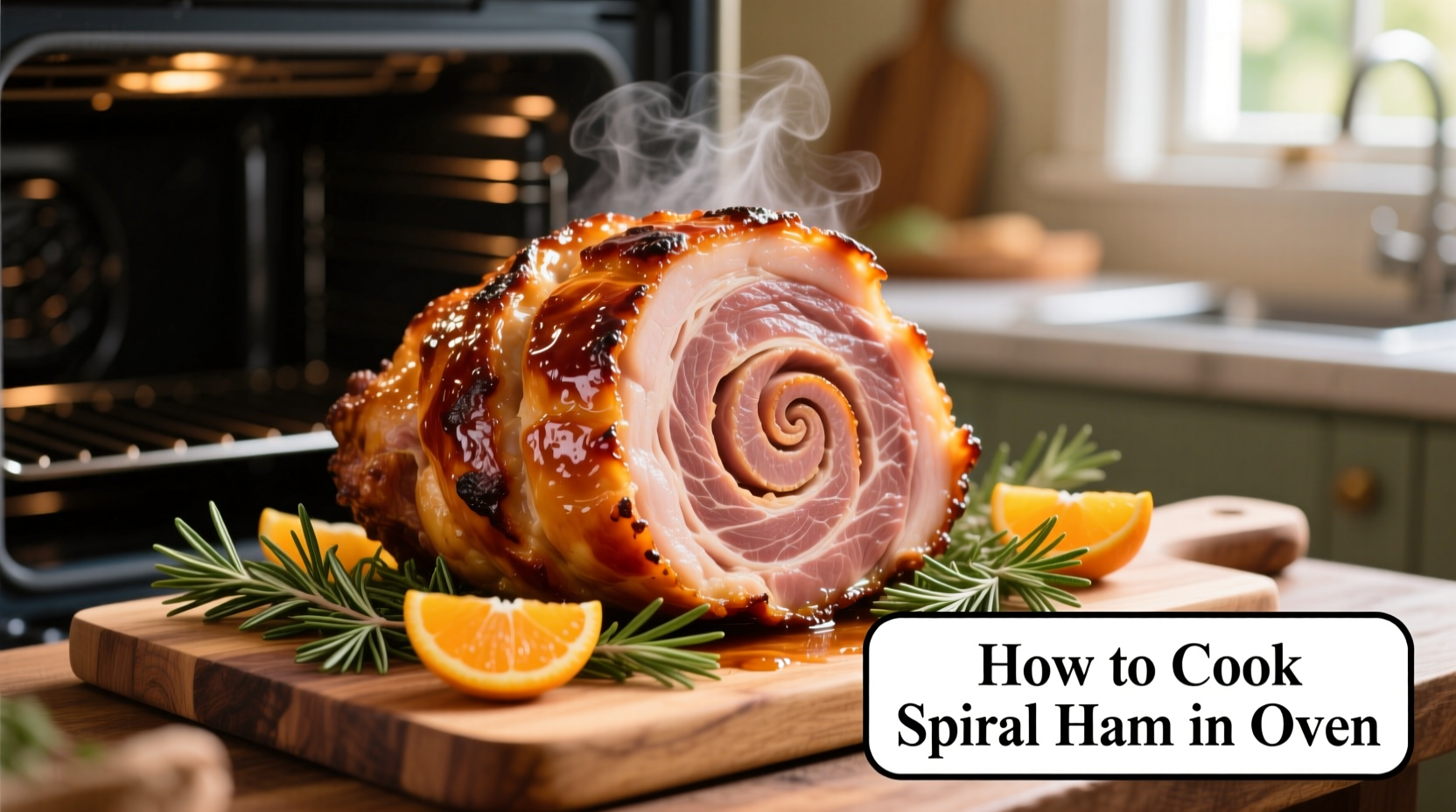Perfectly Cooked Spiral Ham: Your Complete Oven Guide
Nothing says celebration like a beautifully glazed spiral ham centerpiece on your holiday table. But if you've ever ended up with dry, tough slices or uneven heating, you're not alone. With 20 years of professional kitchen experience, I've perfected a method that guarantees moist, flavorful ham with minimal effort. This guide cuts through the confusion and gives you exactly what you need to know—no fluff, just reliable results.
Why This Method Works Every Time
Spiral hams are fully cooked during processing, meaning your job is simply to reheat without drying it out. The critical mistake most home cooks make? Overheating. Our approach maintains optimal moisture while developing that perfect caramelized exterior. The secret lies in precise temperature control and strategic basting—techniques I've refined through hundreds of holiday meals.
Before You Start: Essential Preparation
Understanding your ham is the first step to success. Most spiral hams sold in supermarkets are fully cooked and cured, requiring only reheating. Check your package labeling to confirm:
- Fully cooked hams need reheating to 140°F (60°C)
- "cook before eating" hams require heating to 145°F (63°C) with 3-minute rest
Thaw frozen ham in the refrigerator (allow 4-5 hours per pound). Never thaw at room temperature—a critical food safety point confirmed by the USDA Food Safety and Inspection Service.
Step-by-Step Cooking Process
1. Oven Setup and Pan Preparation
Preheat your oven to 325°F (163°C)—never higher, as excessive heat dries out the delicate meat. Place the ham cut-side down in a roasting pan. This positioning protects the exposed slices from direct heat. Add 1 cup of liquid (apple juice, broth, or water) to the pan bottom—this creates steam that prevents drying.
2. Proper Covering Technique
Tightly cover the entire pan with heavy-duty aluminum foil, crimping edges securely. This creates a steamy environment that locks in moisture. For extra protection, some professional kitchens double-wrap the ham itself before placing it in the pan—a technique I've found particularly valuable for larger hams.
| Ham Weight | Heating Time | Internal Temp |
|---|---|---|
| 5-7 lbs | 1.5-2 hours | 140°F (60°C) |
| 7-10 lbs | 2-2.5 hours | 140°F (60°C) |
| 10-14 lbs | 2.5-3 hours | 140°F (60°C) |
3. Temperature Monitoring
Use an instant-read thermometer inserted into the thickest part (avoiding bone). Check temperature during the last 30 minutes of cooking. The University of Illinois Extension confirms 140°F as the safe reheating temperature for pre-cooked hams—any higher risks drying out the meat.
4. Glazing for Maximum Flavor
During the final 20-30 minutes, remove the foil and apply your glaze. Brush generously every 10 minutes, allowing each layer to caramelize. Popular combinations include:
- Brown sugar, Dijon mustard, and pineapple juice
- Maple syrup, cloves, and orange zest
- Honey, apple cider vinegar, and smoked paprika

Troubleshooting Common Problems
Dry or Tough Ham
This almost always results from overcooking. If your ham is drying out:
- Reduce oven temperature to 300°F
- Add more liquid to the pan
- Re-cover with foil immediately
Uneven Heating
Rotate the pan halfway through cooking. For convection ovens, reduce temperature by 25°F and check 25% earlier than standard times. The USDA Food Safety guidelines note that convection cooking requires adjustments to prevent overcooking.
Serving and Storage Tips
Let the ham rest for 15-20 minutes before serving—this allows juices to redistribute. When carving, follow the natural spiral cuts with a sharp knife. For leftovers, store in airtight containers within 2 hours of cooking. Properly stored, spiral ham remains safe for 3-4 days in the refrigerator or up to 2 months frozen.
Frequently Asked Questions
Can I cook a spiral ham at 350°F instead of 325°F?
While possible, 350°F increases drying risk. The USDA recommends 325°F as the ideal temperature for reheating fully cooked hams. If using 350°F, reduce cooking time by 25% and check temperature 30 minutes early.
How do I prevent the edges from burning during glazing?
Place small foil squares over any thin or exposed edges that begin to darken too quickly. This technique, used in professional kitchens, protects vulnerable areas while allowing the rest of the ham to develop perfect caramelization.
Can I use a slow cooker for spiral ham?
Yes, but with modifications. Place the ham in the slow cooker with ½ cup liquid, set to LOW for 2-3 hours (not exceeding 4 hours), then transfer to oven for glazing. The University of Georgia Extension notes slow cookers maintain ideal moisture but lack browning capability.
Why is my spiral ham so salty?
Spiral hams are cured with salt solutions. To reduce saltiness, soak the ham in cold water for 1-2 hours before cooking, changing water every 30 minutes. The National Center for Home Food Preservation confirms this method effectively reduces surface salt without compromising food safety.
How long should I let the ham rest before serving?
Rest for 15-20 minutes minimum. This crucial step allows internal temperatures to stabilize and juices to redistribute. Cutting too soon releases precious moisture onto the cutting board rather than staying in the meat.











 浙公网安备
33010002000092号
浙公网安备
33010002000092号 浙B2-20120091-4
浙B2-20120091-4